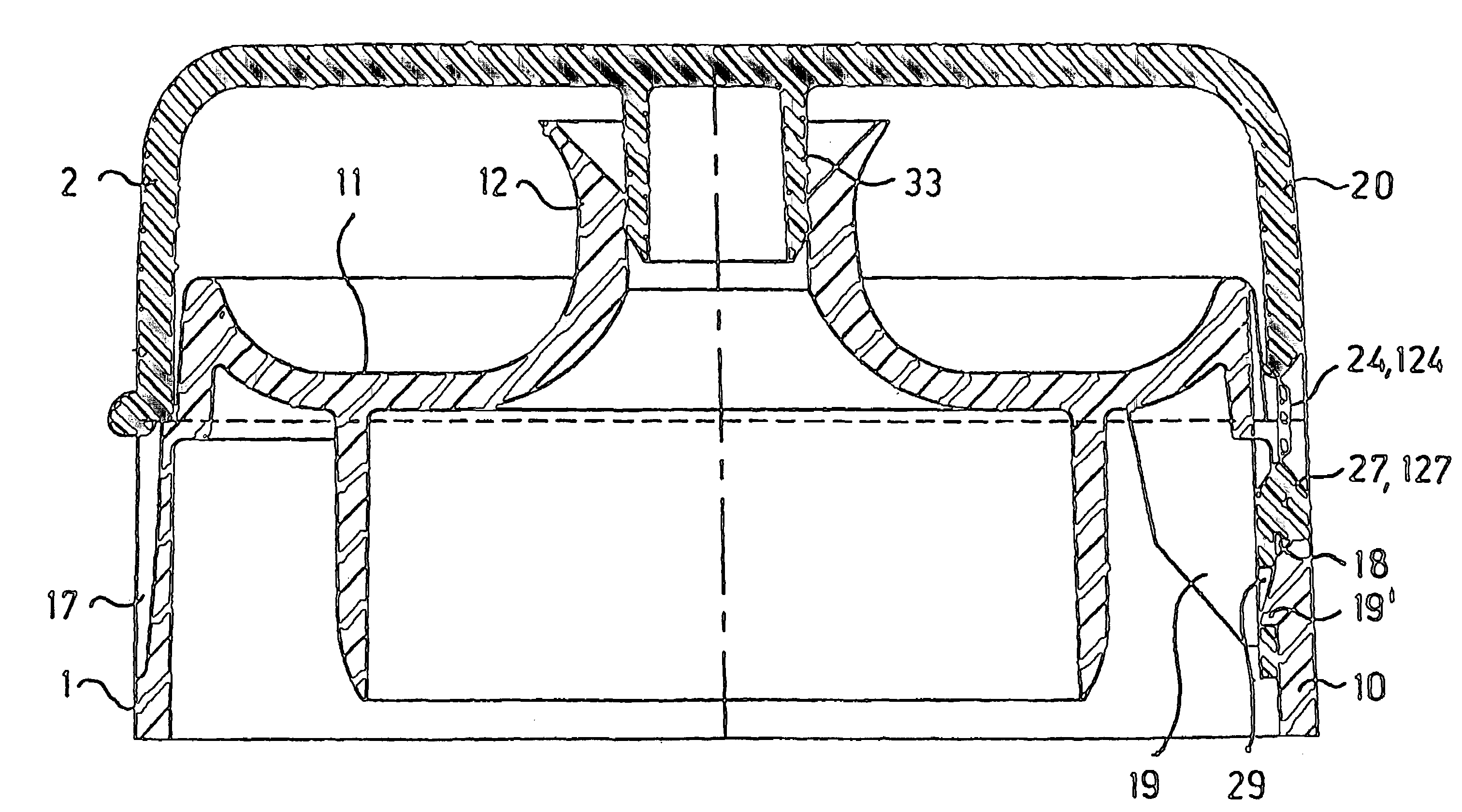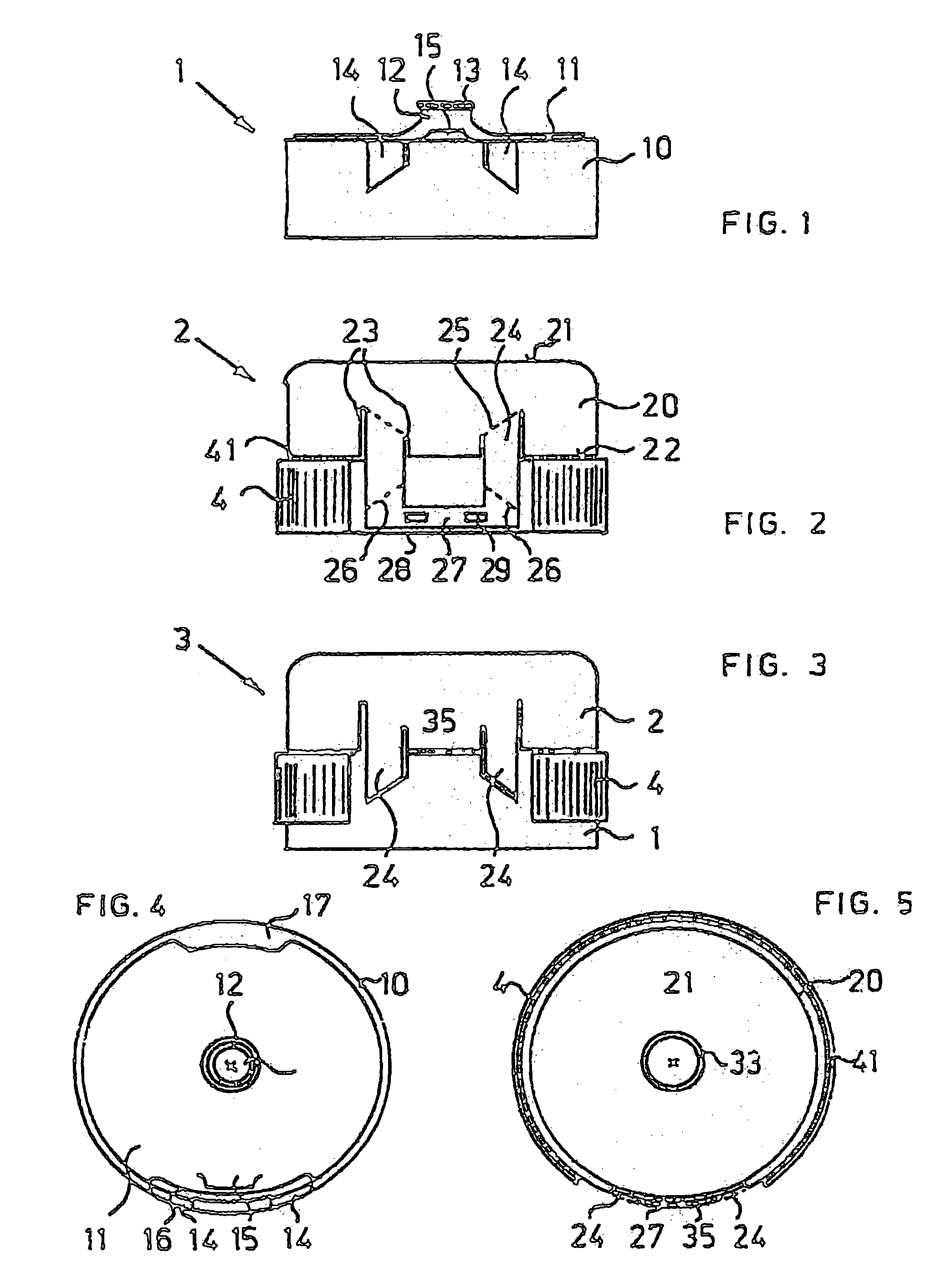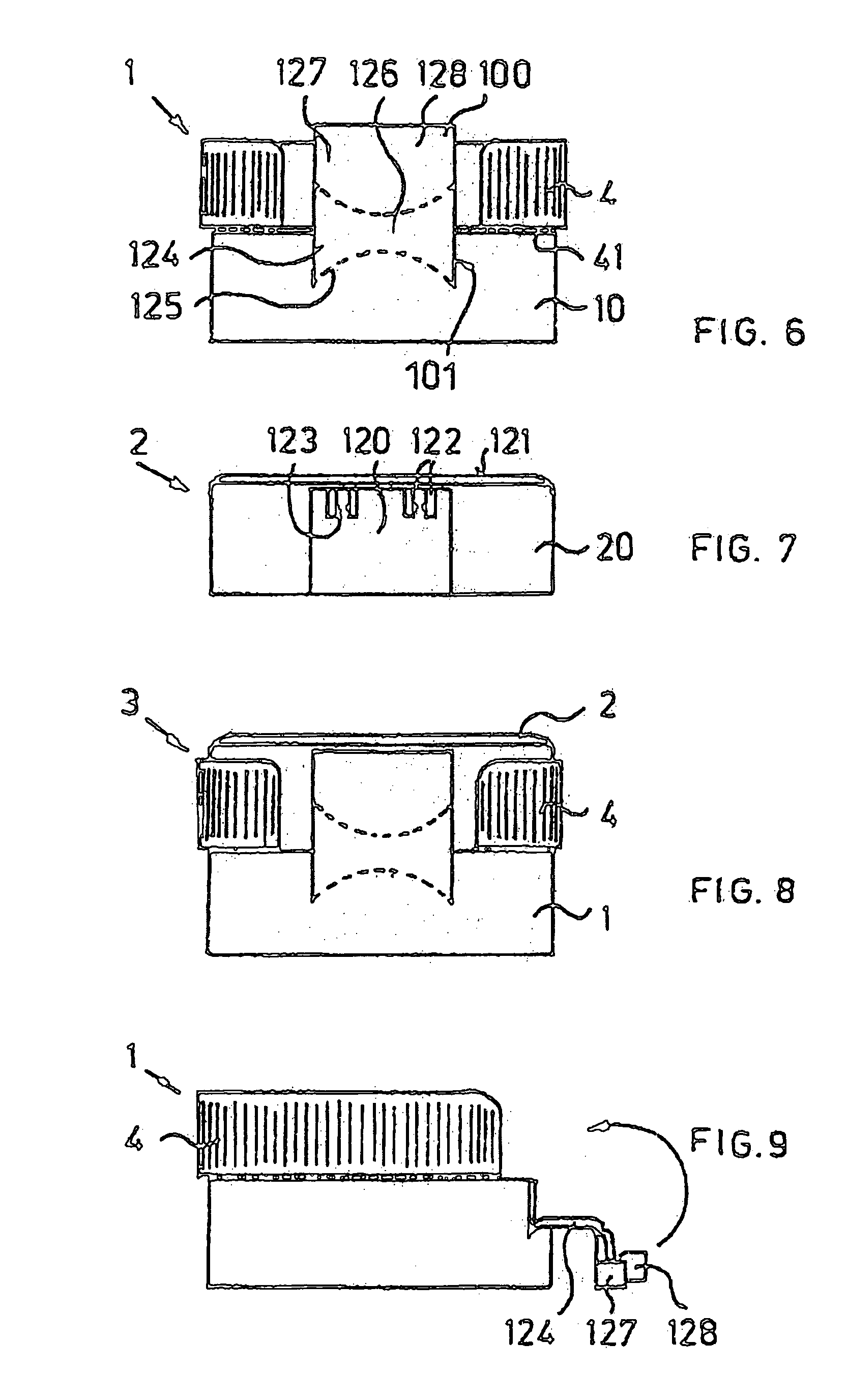Two-part plastic snap hinge closure
a hinge closure and two-part technology, applied in the direction of closure lids, closure stoppers, caps, etc., can solve the problems of enormous capacity of such assembly machines, and achieve the effect of preventing large amounts of plastic material and cheapest possible production
- Summary
- Abstract
- Description
- Claims
- Application Information
AI Technical Summary
Benefits of technology
Problems solved by technology
Method used
Image
Examples
first embodiment
[0037]A first embodiment is represented in FIGS. 1 to 5. The lower closure part 1 in FIG. 1 has a cylindrical casing wall 10. The lower part 1 has fastening means with which the lower part 1 can be fastened on a container. The fastening means are conventional, for example, a screw thread arranged on the inner wall of the cylindrical casing wall 10, or fastening cams or fastening beads, depending on whether it is intended to screw or press the lower part 1 on a container.
[0038]On the top, the lower part 1 is closed off by a cover surface 11, in which a pouring opening or, as in this case a pouring spout 12, is arranged. In a conventional manner, the pouring spout has a circumferential sealing or holding bead 13. Recesses 14 are shown in the lateral view of FIG. 1, which permit the movable spring elements to be free. These cutouts are inwardly offset toward the center in relation to the outer surface of the casing wall 10. The recesses 14 can be offset so far toward the interior that ...
second embodiment
[0051]In the second embodiment in accordance with FIGS. 6 to 9, no pouring spout is shown. However, the pouring spout can be provided the same as in the previously mentioned embodiment. Accordingly, a corresponding sealing plug can also be provided in the cap 2. However, to include these elements in the drawing would clutter it too much without offering any additional information, but the elements can be provided. This in particular, because these elements play a corresponding part during assembly.
[0052]Although the two parts of the closure are individually produced and must be assembled, in comparison to known plastic closures of similar construction they are considerably cheaper because of the enormously increased productivity when manufacturing the individual parts. As previously mentioned, this productivity is the result of the selected shape and the design of the snap hinge closure from two parts.
[0053]A solution for a two-part closure 3 which is optimized with respect to produ...
PUM
 Login to View More
Login to View More Abstract
Description
Claims
Application Information
 Login to View More
Login to View More - R&D
- Intellectual Property
- Life Sciences
- Materials
- Tech Scout
- Unparalleled Data Quality
- Higher Quality Content
- 60% Fewer Hallucinations
Browse by: Latest US Patents, China's latest patents, Technical Efficacy Thesaurus, Application Domain, Technology Topic, Popular Technical Reports.
© 2025 PatSnap. All rights reserved.Legal|Privacy policy|Modern Slavery Act Transparency Statement|Sitemap|About US| Contact US: help@patsnap.com



